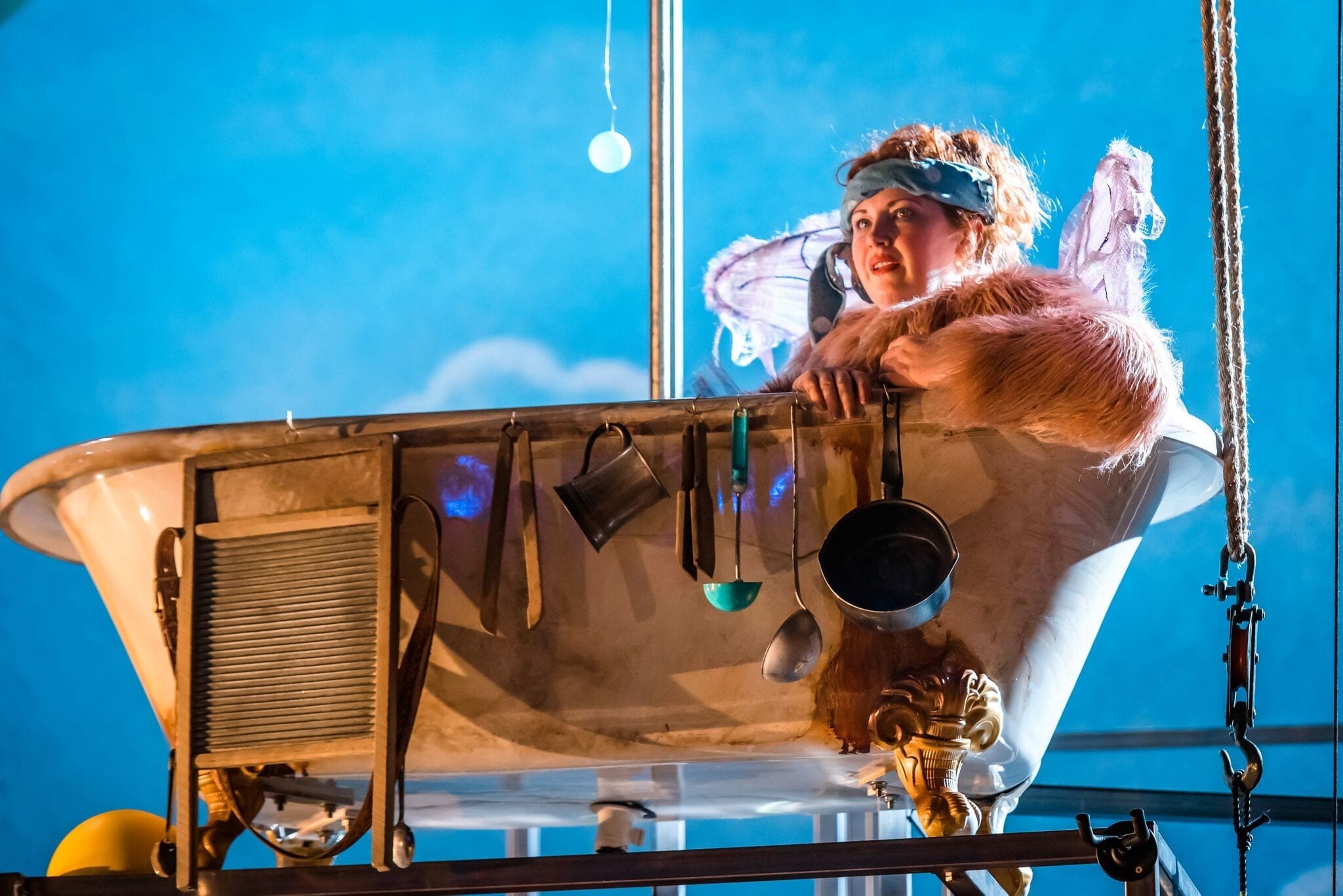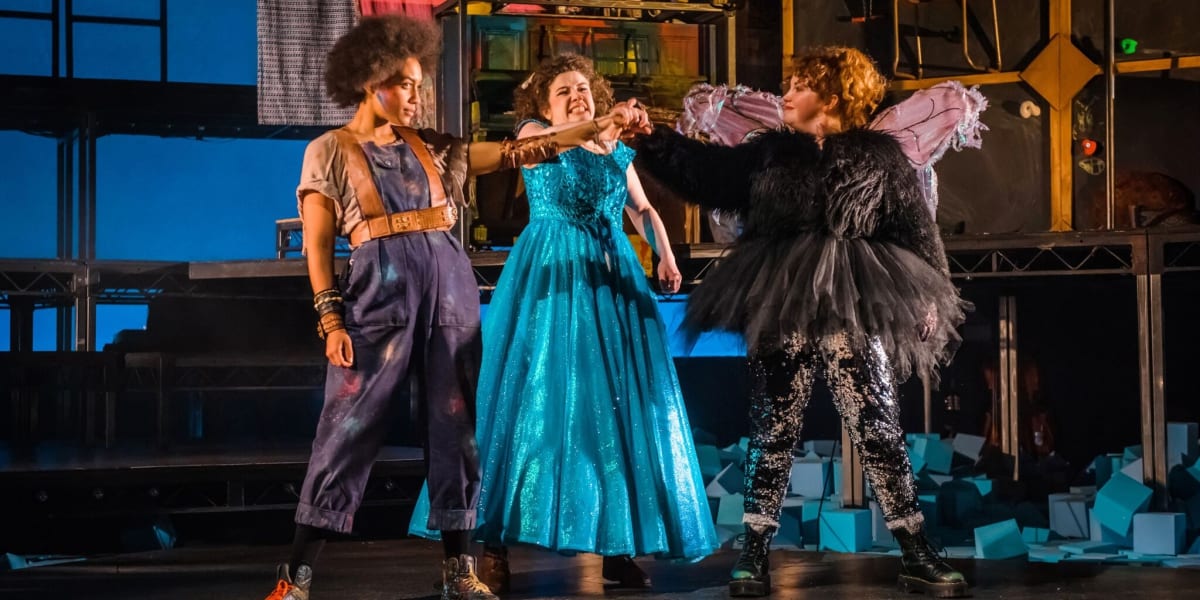The traditional story of Peter Pan about the boy who refuses to grow up, and his adventures with Wendy Darling and her brothers in Neverland, is well known and well loved. All credit, then, to director Eleanor Rhode and everyone at the Lyceum for bringing Ella Hickson’s thoroughly modern adaptation (first performed at the RSC in 2013) to life in such a riveting and sparkling manner, while retaining all of the original’s magic and wonder.
By adding the character of Tom, a third brother who passes away (becomes ‘lost’) at the beginning of the play, Hickson’s version of the traditional Peter Pan story gathers pathos, and gives Wendy significantly more agency. Rather than being a passive mother figure stolen away by Peter, the decision to leave becomes hers, to find her ‘lost’ brother, and the play becomes a story of two equals.
With Tom’s death driving the play, Wendy and Peter Pan also becomes less about growing up and more explicitly about mortality. The fearsome Captain Hook acquires a thoroughly sympathetic edge as he gazes enviously at Peter’s eternal youth.
However, the play cautions against being too envious of youth. Peter’s seemingly carefree existence comes at the expense of forgetting everything in the past, good and bad. Hook remembers too much. In this, they play out the responses of the Darling parents to the death of their son – Mrs Darling can’t forget, and Mr Darling wants to forget too quickly.
Although Wendy and Peter Pan gains pathos from its explicit confrontation of loss and death, it is also rip-roaring fun. It is stuffed full of entertaining one-liners and the climactic flying scene is truly thrilling. The cast clearly have as good a time as the audience, with Dorian Simpson’s Smee a light-hearted counterpoint to the brooding and scenery chewing Captain Hook (Gyuri Sarossy) and Sally Reid and Bonnie Baddoo sparkle as Tink and Tiger Lily.

The show, though, really belongs to Ziggy Heath’s manic Peter and Isobel McArthur’s strong Wendy. They help each other grow throughout the play, fighting Hook and his pirates together as equals. Their final scenes together are tenderly enough done to bring a lump to the throat and a tear to the eye.
As the play gathers pace and Wendy gathers confidence, she does start to resemble a mother figure; however, she is not the meek homemaker of the traditional story but more of a fierce tigress fighting to protect her young. The powerful bond she forms with Tink and Tiger Lilly is in stark and positive contrast to the usually poisonous relationships between the female characters in Peter Pan.
If there are criticisms, they are few and far between. The sword fights are ponderous, and the second half drifts a little, but given its increased emotional heft, that can be forgiven. The sets are rarely anything over than excellent at the Lyceum, and this one is no exception, the only criticism being the underuse of the genuinely startling crocodile.
It’s a cliché, but Wendy and Peter Pan really will make you laugh and make you cry. It appeals to children and their parents, and will have you leaving the theatre with a spring in your step, whether you’re aged nine or forty nine. Time’s running out to go and see Wendy and Peter Pan, so don’t leave it too late. Tick tock.

